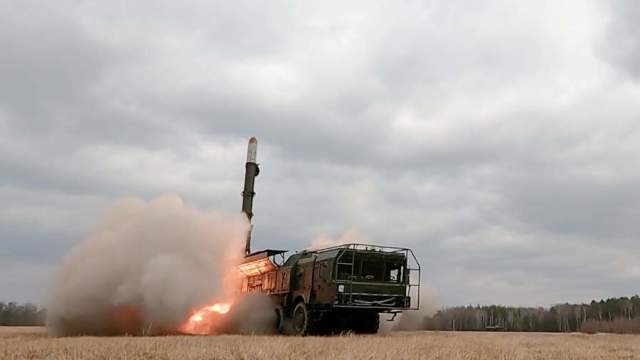Military expert Dmitry Kornev — how Russia will be able to strengthen the western borders in the event of Sweden and Finland joining NATO
Since March 2022, discussions have been going on in Finland and Sweden about renouncing neutral status and joining the North Atlantic Alliance. On April 11, The Times newspaper reported, citing sources, that both states intend to apply this summer. This information was commented on by Deputy Chairman of the Security Council of the Russian Federation Dmitry Medvedev.
"If Sweden and Finland join NATO, the length of the alliance's land borders with the Russian Federation will more than double. Naturally, these borders will have to be strengthened. Seriously strengthen the grouping of land forces and air defense, deploy significant naval forces in the waters of the Gulf of Finland," such a message was published in Medvedev's Telegram channel.
What kind of response can the world expect if the plans of our neutral neighbors were implemented yesterday?
The very first thing — and this has already been mentioned — is the strengthening of the Baltic Fleet. The Baltic Sea is a relatively small water area, and a fleet of relatively low-tonnage corvettes of Project 20380 or 20385 can be quite effective here. Each such ship carries a modern anti-aircraft defense complex "Poliment-Redut" and installations for the vertical launch of Kalibr cruise missiles. A group of such ships could provide both protection of the main communications in the Baltic and carry a certain retaliatory missile potential with a range of up to 2500 km.
The surface fleet, of course, should be strengthened by submarine forces — now they are probably not enough in the Baltic Fleet. Moreover, relatively low-tonnage non-nuclear submarines of Project 06363 or Project 677 "Lad" can be based here. These submarines are among the most silent in the Russian navy, and in addition to torpedoes and mines, they are capable of carrying several Kalibr-PL cruise missiles. The underwater component of the fleet could provide operations against potential enemy ships, disrupt sea communications and strike at any land targets.
Of course, aviation will have to ensure the stability of the naval grouping. Su-35S fighters and Su-34 front-line bombers will have to ensure air supremacy over the Baltic. And again in cooperation, but now with the aerospace defense forces, which can cover huge spaces with S-400 and S-500 SAM domes. And especially considering that they can work both from the Leningrad region and from near Kaliningrad. It is also likely to strengthen the air base in Petrozavodsk and not only.
Highly mobile Dagger aviation missile systems with MiG-31I carrier aircraft can be quickly transferred from the depths of the country during the threatened period. Although no one prohibits their use from Russian airspace, the range of the Dagger missiles will ensure the defeat of any targets in Scandinavia if necessary.
Ground forces are also likely to be reinforced along the entire border with newly minted NATO members: motorized rifle and tank units, military air defense and electronic warfare troops. All necessary forces and means will be additionally deployed. Groups of troops in Karelia and on the Kola Peninsula will also be strengthened. Of course, a special role in such a confrontation will be assigned to the Northern Fleet — it is likely that it will need to master new types of combat operations.
As for the Iskanders, an additional one or two new missile brigades may probably be deployed. And not necessarily in Kaliningrad: it would be more logical to have another line of defense to the north of St. Petersburg - to cover the transport arteries between the central part of the country and the North. The Iskanders will also be responsible for protecting the fleet bases from the threat from land, which does not exist now.
What can we say about the nuclear arsenal? The Northern Fleet has and still has its own stock of nuclear bombs and warheads for anti-ship missiles and, possibly, for Kalibr-type missiles. It is possible that such an arsenal may appear in the Baltic. Carriers of such combat units can be any front-line aircraft that can use free-falling bombs, in addition, if necessary, they can be equipped with missiles of the Iskander-M complex and any "Calibers".
Dmitry Kornev — military expert, editor-in-chief of the MilitaryRussia Internet project
The editorial board's position may not coincide with the author's opinion

